Himalayan cats are known for their friendly temperaments and colorpoint coat patterns. They have big eyes, squished faces, and long fur in a variety of colors.
While Himalayan cats always have white or cream fur, they also have darker points on their face, ears, legs, and tail. These points may be lilac, chocolate, blue, orange, cream, or seal. They may have solid-colored, lynx, or tortoiseshell patterns.
In this article, we’ll discuss the six Himalayan cat coat colors and three patterns for a total of 14 coat types!
Himalayan Cat Patterns
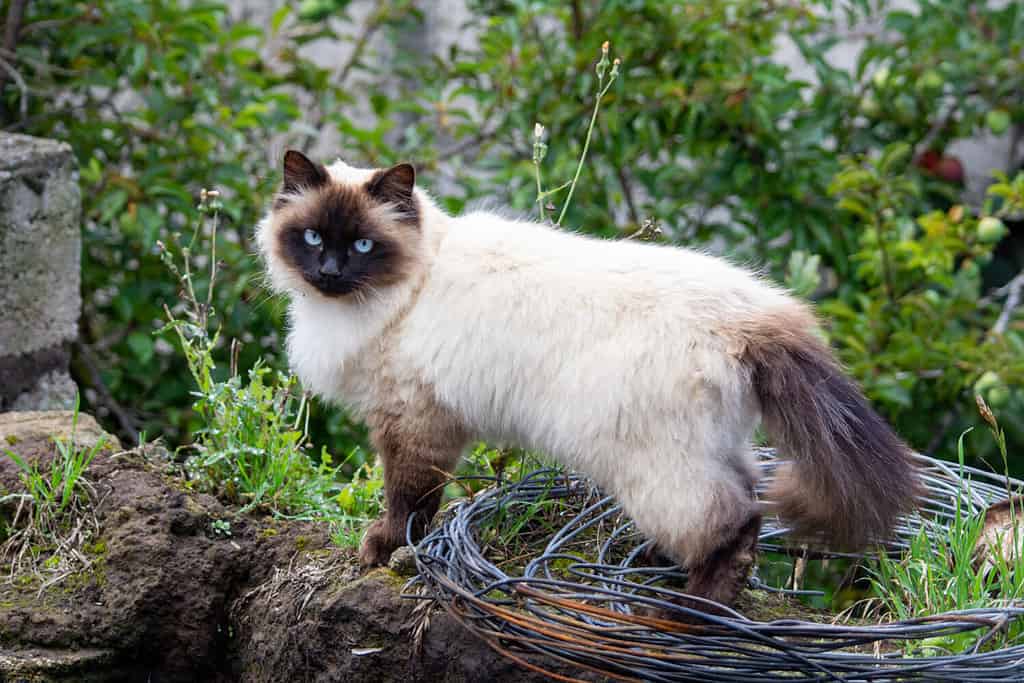
Himalayan cats have seven different coat colors.
©ecuadorplanet/Shutterstock.com
Himalayan cats are always white or cream with points, or darker patches on the face, ears, legs, and tail.
The colors and patterns of these points vary. The patterns you’ll see in Himalayan cat coats include:
Classic Point
These Himalayans have solid-colored points with cream or white base coats. Classic point Himalayans may have any of the following coat colors:
- Lilac
- Chocolate (brown with pink noses and paw pads)
- Blue
- Flame (orange)
- Cream
- Seal (brown with brown noses and paw pads)
Lynx Point
With the classic tabby “M” on the forehead and striped fur throughout the points, lynx point Himalayan cats are also known as tabby points.
They can be any of the following colors:
- Lilac
- Chocolate (brown with pink noses and paw pads)
- Blue
- Flame (orange)
- Cream
- Seal (brown with brown noses and paw pads)
Tortoiseshell Point
Also called tortie, this pattern occurs when the points have several blotches of color, typically brown and orange.
Tortie points can have the following point colors:
- Chocolate
- Cream
Below, we’ll discuss each coat color more in-depth, as well as the pattern variations you might see in each.
#1: Lilac Point
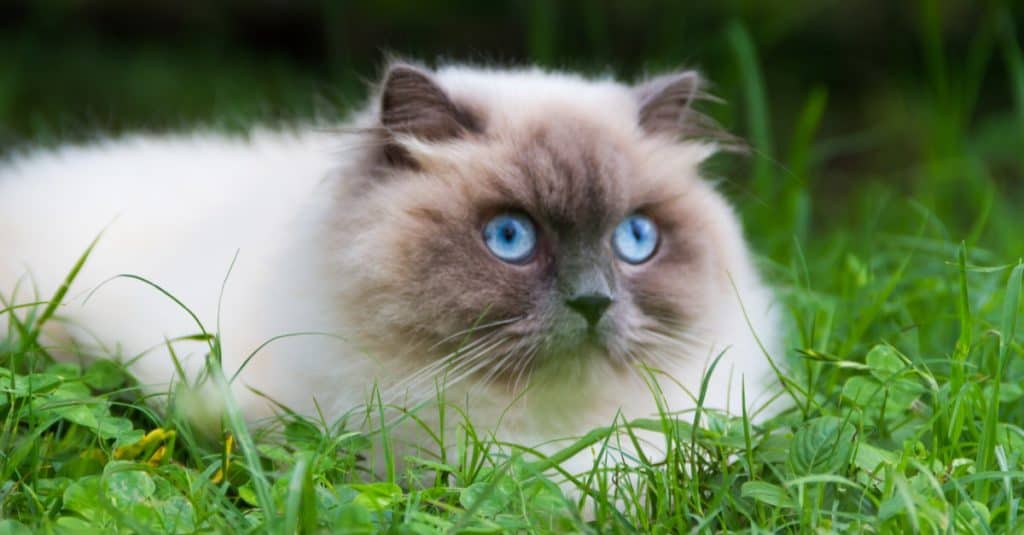
Lilac point Himalayans are the rarest.
©Gabriela Bertolini/Shutterstock.com
The color “lilac” is caused by dilute chocolate genes but can appear as a pale, warm-toned gray. These kitties have light gray points on white or cream-colored fur. Lilac Himalayan cats may also have the lynx point pattern.
Kittens must inherit both chocolate and dilute genes from each parent, meaning they need double recessive genes. This makes lilac point Himalayan cats very rare to see!
You can distinguish them from blue point Himalayans from their warm, almost pinkish tones and their pink paw pads.
#2: Chocolate Point
These cats have deep brown points, much darker than you’ll see in a lilac point cat. They may have classic, lynx, or tortie point markings.
Chocolate point Himalayans look very similar to the more common seal points but can be distinguished by their pink noses and paw pads.
As we discussed above, chocolate develops due to recessive color genes, meaning both parent cats must have this gene in their lineage in order to have chocolate point kittens. They may or may not show chocolate coloring themselves.
#3: Blue Point

The need for double recessive genes makes the blue point Himalayan rare to see.
©iStock.com/Louis-Michel DESERT
Blue point Himalayans have cool-toned gray fur that can appear blue-ish in the right lighting. Genetics-wise, blue is considered a dilute, or light, black.
The rarity of blue point Himalayans stems from the recessive dilute gene. The cats may have classic or lynx point markings.
#4: Flame Point
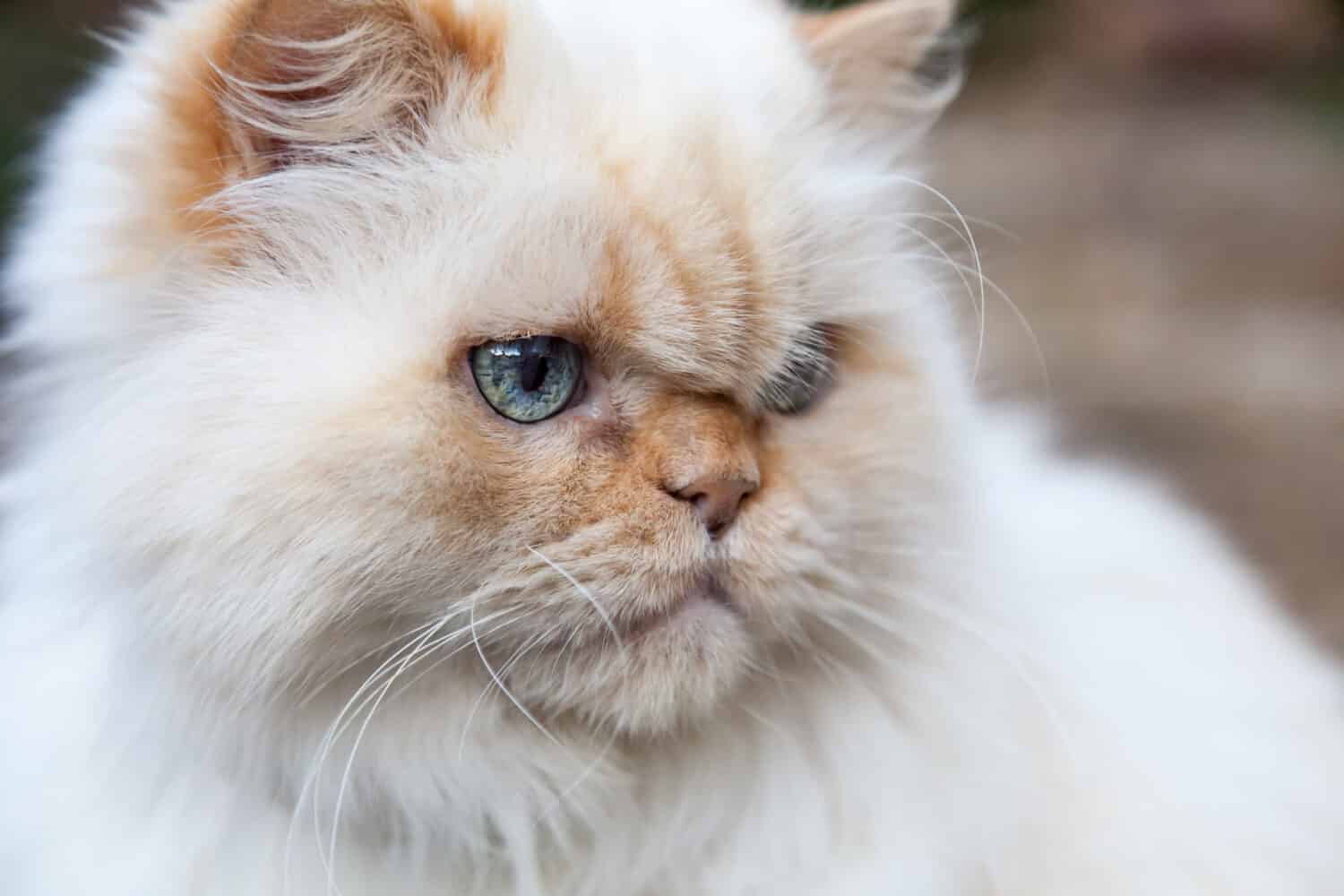
Orange points in Himalayan cats are referred to as “flame points.”
©cdrin/Shutterstock.com
Flame point Himalayans are quite popular due to their stunning looks. The color “flame” is the same as you’ll see in a classic orange tabby–only the name sounds fancy!
These cats can have classic or lynx markings. You may also see the same orange tone in Himalayans with tortoiseshell patterns.
#5: Cream Point
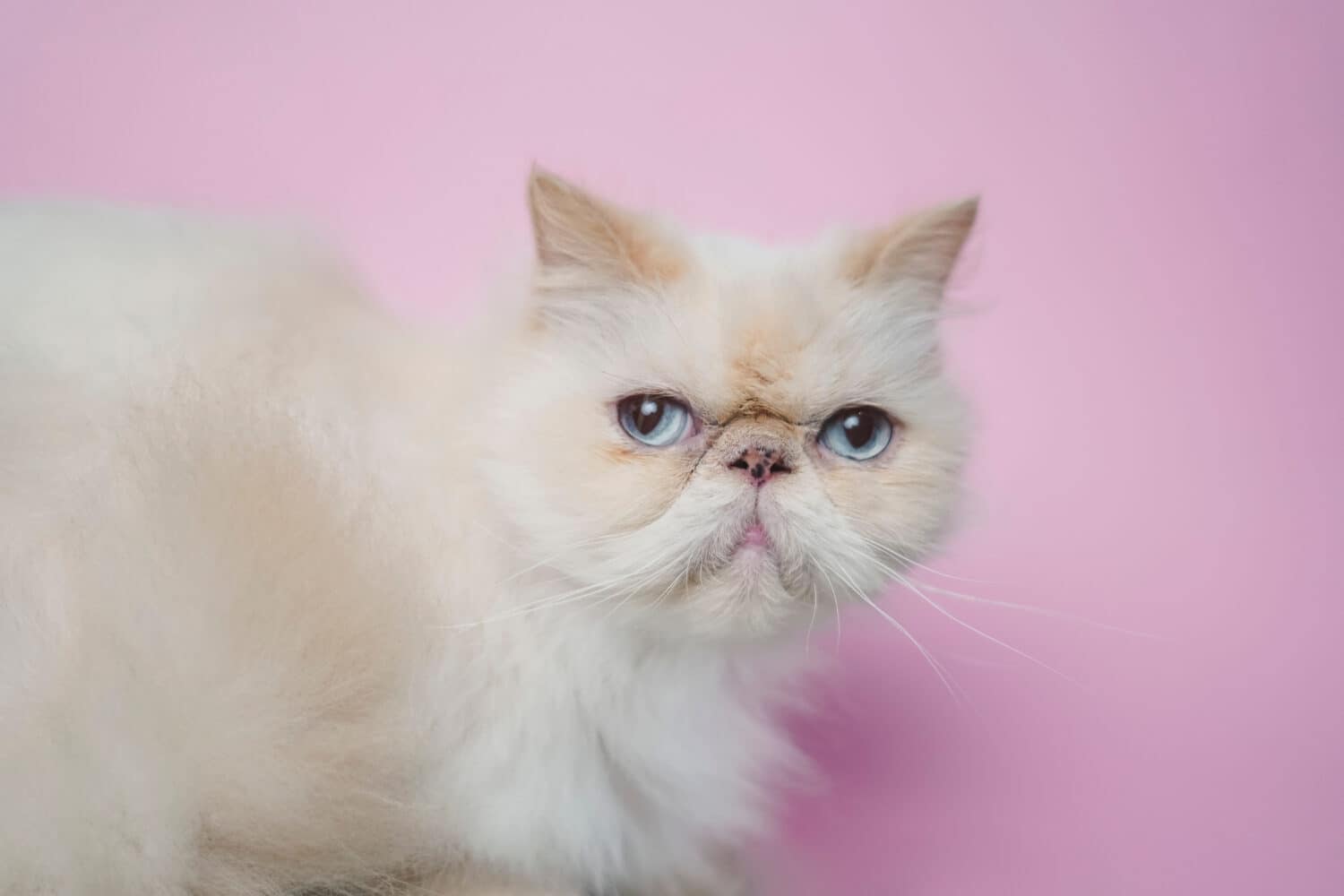
Some cream points hardly look like they have points, as the darker and lighter fur colors blend together.
©Ana Francisconii/Shutterstock.com
Cream point Himalayan cats may have classic, lynx, or tortie point markings. Their points can also look incredibly subtle, as sometimes the cream points can blend in with their white or cream-colored base coats.
Cream is a dilute orange, or flame, color. While the gene is recessive, cream point Himalayans are fairly commonly seen.
#6: Seal Point
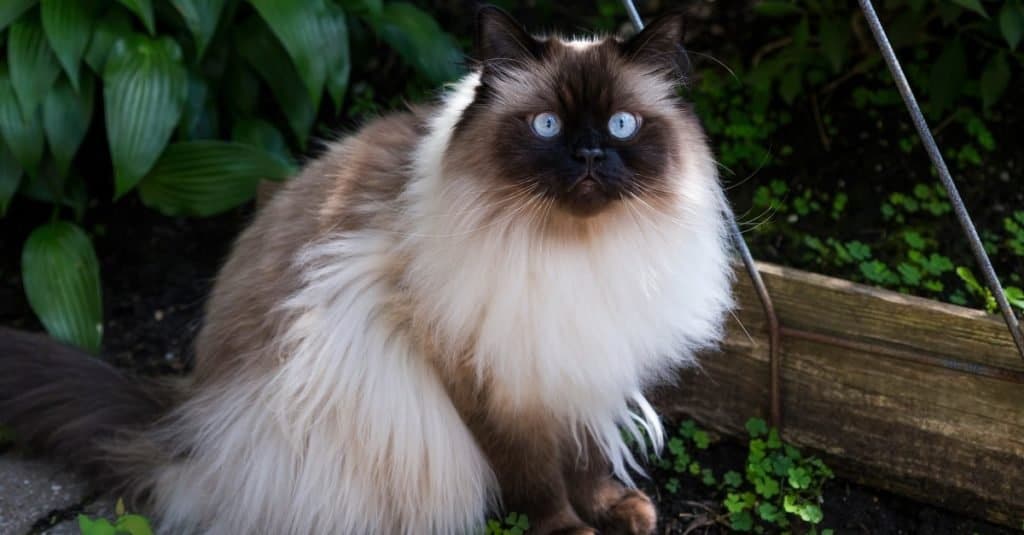
Seal point Himalayans are the most common, and likely the first image you see when you think of the breed.
©Anne Richard/Shutterstock.com
Lastly, seal point Himalayans have dark brown points in either classic, lynx, or tortie patterns. Their noses and paw pads match their rich brown fur, which is what differentiates them from chocolate point cats.
Himalayan Cat Ancestry and Breeding
Himalayan cats are their own breed now but originated as a cross between Persian and Siamese cats. The breed is very new compared to its ancient ancestors, dating back only to the 1950s.
Himalayans kept the long coats and squished faces of their Persian ancestors alongside the colorpoint Siamese markings. Unfortunately, the squished face can cause several health issues within the breed, and make them less healthy than a well-bred Siamese cat.
Finding a reputable Himalayan cat breeder is an impossible task due to these inherited health problems, but some are better than others.
It’s important to note that breeding for color is a major red flag, especially when charging more for certain colors than others. Breeders who act in this way are certainly either kitten mills or backyard breeders.
While Himalayan cats are endlessly adorable, it’s best to adopt one from a rescue so as not to support unethical breeding. Another option is to choose a healthier breed and find a reputable cat breeder to adopt from.
Thank you for reading! If you have feedback on this post, please contact the AZ Animals editorial team.
The photo featured at the top of this post is © cdrin/Shutterstock.com
Thank you for reading! Have some feedback for us? Contact the AZ Animals editorial team.






